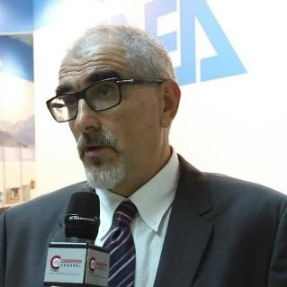Green Roofs, Green Walls, Urban Greenhouses and Hi-Tech City Landscape for Sustainability
A special issue of Horticulturae (ISSN 2311-7524). This special issue belongs to the section "Protected Culture".
Deadline for manuscript submissions: closed (10 May 2024) | Viewed by 11569
Special Issue Editors
Interests: biology and agronomy; energy efficiency and sustainability in agriculture; agroindustry and rural development; greenhouse technologies for extreme environments
Interests: green infrastructures; building efficiency; sustainable development; Life Cycle Assessment; green roofs; rural buildings
Special Issues, Collections and Topics in MDPI journals
Interests: green infrastructures; VOC emission mitigation by plants; biochar; soil amendments; soil carbon sequestration; plant response to abiotic stresses (drought)
Special Issue Information
Dear Colleagues,
Green plants have always been a design element in the architecture of buildings and the urban decoration of cities. Recently however, it has been revealed that they play an effective role in tackling the negative environmental impacts and energy costs that result from the air conditioning units of buildings, enabling the utilization of spaces and surfaces otherwise not exploited in cities. The use of plant systems as a Nature-Based Solution (NBS) to improve the environmental and energy sustainability of buildings and cities is in accordance with the objectives of the COM (2013) 249 Directive "Green Infrastructures—Strengthening Natural Capital in Europe". In addition, the use of vegetation for reducing the energy costs of acclimatization in buildings has been considered by the Directive (EU) 2018/844 on Energy Efficiency and the European Green Deal 2021–2026 strategy. In this context, the plant phenomena of photosynthesis and evapotranspiration are particularly useful during hot seasons to reduce electricity consumption and CO2 emissions that result from the air conditioning of buildings; moreover, plant-covered surfaces provide shade for and shield buildings’ outer surfaces. Thus, plant systems installed on buildings represent an attractive strategy to achieve the goals of energy efficiency and environmental regeneration, and can also involve growing food-based plants on urban green roofs and in greenhouses. This Special Issue aims to involve work from scientists and experts from various research fields on the use of vegetation to promote sustainability and energy saving, the acceleration of the decarbonization of cities, as well as the reduction of air pollution and the transformation of cities into sustainable and resilient ecosystems.
Dr. Carlo Alberto Campiotti
Prof. Dr. Carlo Bibbiani
Dr. Arianna Latini
Guest Editors
Manuscript Submission Information
Manuscripts should be submitted online at www.mdpi.com by registering and logging in to this website. Once you are registered, click here to go to the submission form. Manuscripts can be submitted until the deadline. All submissions that pass pre-check are peer-reviewed. Accepted papers will be published continuously in the journal (as soon as accepted) and will be listed together on the special issue website. Research articles, review articles as well as short communications are invited. For planned papers, a title and short abstract (about 250 words) can be sent to the Editorial Office for assessment.
Submitted manuscripts should not have been published previously, nor be under consideration for publication elsewhere (except conference proceedings papers). All manuscripts are thoroughly refereed through a single-blind peer-review process. A guide for authors and other relevant information for submission of manuscripts is available on the Instructions for Authors page. Horticulturae is an international peer-reviewed open access monthly journal published by MDPI.
Please visit the Instructions for Authors page before submitting a manuscript. The Article Processing Charge (APC) for publication in this open access journal is 2200 CHF (Swiss Francs). Submitted papers should be well formatted and use good English. Authors may use MDPI's English editing service prior to publication or during author revisions.
Keywords
- green walls
- green roofs
- green infrastructures
- air conditioning
- building energy efficiency
- urban nature-based solutions
- urban ecosystem services
Benefits of Publishing in a Special Issue
- Ease of navigation: Grouping papers by topic helps scholars navigate broad scope journals more efficiently.
- Greater discoverability: Special Issues support the reach and impact of scientific research. Articles in Special Issues are more discoverable and cited more frequently.
- Expansion of research network: Special Issues facilitate connections among authors, fostering scientific collaborations.
- External promotion: Articles in Special Issues are often promoted through the journal's social media, increasing their visibility.
- Reprint: MDPI Books provides the opportunity to republish successful Special Issues in book format, both online and in print.
Further information on MDPI's Special Issue policies can be found here.







